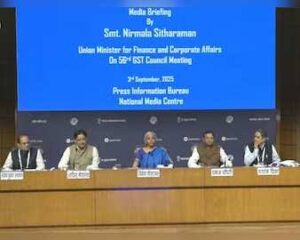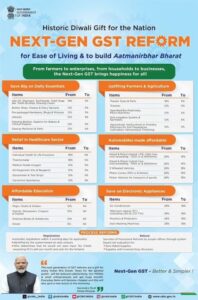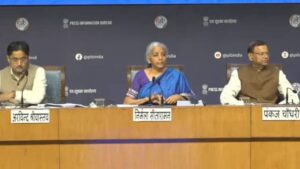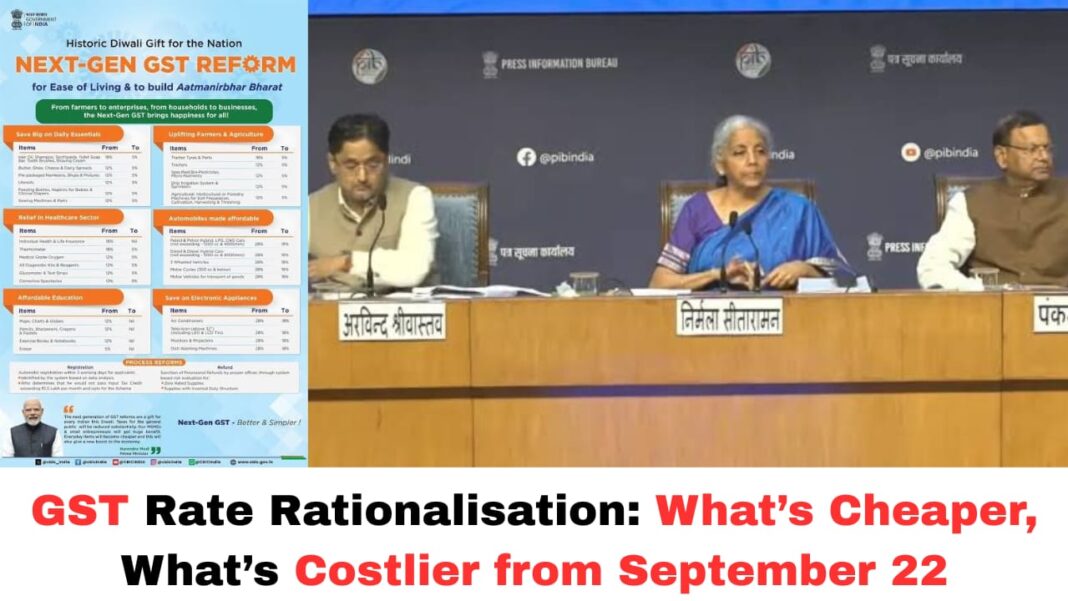Digital News Guru National Desk:
Two GST Slabs, One Sweeping Reform: How India is Rewriting Its Tax Code
In what’s being hailed as one of the most consequential reforms since the introduction of GST in 2017, India’s GST Council has approved a complete reworking of the tax structure. The four-tier GST rate—comprising 5%, 12%, 18%, and 28%—will be replaced by a streamlined, simplified model featuring just two main slabs: 5% and 18%. This realignment aims to ease compliance, reduce tax disputes, and give consumers tangible relief across a wide spectrum of goods.
From Complexity to Clarity
The 5% “merit” slab will primarily benefit everyday necessities—personal care products like shampoos, soaps, and toothpaste; essential food items; household necessities; and basic medical equipment. Several items now in higher tiers, including those at 12% or even 18%, will move down to this category, effectively lowering their tax burden.

On the other hand, the 18% “standard” slab will apply to most consumer durables and standard goods such as air conditioners, televisions, small cars, and household appliances—many of which were previously taxed at 28%.
The 40% Slab: Targeting Sin & Luxury Goods
In tandem with tax reductions, the Council has unveiled a newly defined 40% GST slab targeting “sin” and luxury items. Products like cigarettes, bidis, pan masala, gutkha, aerated sugary or caffeinated drinks, premium cars (petrol SUVs over 1,200 cc and diesel over 1,500 cc), motorcycles over 350 cc, yachts, and private aircraft fall under this highest tax bracket. The dual objective is to curb consumption of harmful goods while tapping into revenue from luxury spending.
However, there’s an important nuance: for tobacco-related products (like pan masala, cigarettes, chewing tobacco, bidis), the Council has deferred their shift to the 40% slab until the existing compensation cess mechanism—currently in place to aid state revenues—has fully cleared its debt. Until then, they will continue under the current GST plus cess regime.
What’s Changing, What’s Free, and What’s Delayed
Key Highlights of GST 2.0
- Two Simplified Slabs (5% & 18%): Simplifying everything from consumer goods to durables enhances transparency and compliance.
- 0% GST on Essentials: A range of items will now attract no GST—including individual life and health insurance, educational supplies (like notebooks, pencils), life-saving drugs (antineoplastics and rare-disease medicines), baby essentials (like diapers), and basic medical devices.
- Reduced Rates for Daily Goods: Moving from 18% to 5% for personal care, food items, medical devices, feeding bottles, and correcting spectacles offers immediate cost relief.

- Durables Get Cheaper: ACs, TVs, small cars, and other appliances shedding their 28% tax tag will now fall under 18%, driving potential demand growth.
- Ultra-Luxury Items Hit with 40% GST: Targeted at deterring unnecessary consumption and raising additional revenue.
- Tobacco Delay: A phased approach keeps tobacco products under current tax until transition arrangements complete.
Administrative and Compliance Reforms
The overhaul extends beyond rates. The Council has greenlit faster GST registration for low-risk businesses, implementation of pre-filled return forms, and expedited refund processing—all aimed at reducing red tape and improving business liquidity.
Context and Impacts
Background
Prime Minister Modi had hinted at these sweeping reforms during his Independence Day speech on August 15, 2025—calling it a “Diwali gift” to citizens. The GST Council convened on September 3, 2025, and unanimously backed the changes, underscoring cross-party and cross-state consensus.
Economic Implications
- Consumers Win: Households should see lower bills and improved affordability across a wide span of goods.
- Boost to Consumption: Accelerated demand during the festive season may counter slowing economic momentum and global trade pressures.

- Industry Momentum: Sectors like FMCG, appliances, and automotive may get a fillip as lower tax rates build incentive for purchase.
- Revenue Trade-offs: The estimated revenue shortfall—ranging from Rs 48,000 to Rs 93,000 crore—is a concern, especially for state budgets. The deferment on tobacco tax helps soften one part of that shock.
In Conclusion
GST 2.0 isn’t just a tweak—it’s a transformative shift aimed at simplifying taxation, reducing living costs, streamlining compliance, and supporting growth. It’s a bold move that touches every facet of consumer spending and business operations.
Come September 22, as Navratri begins, millions of consumers and businesses will directly experience its impact—whether through lower taxes on everyday items, smoother processes, or higher levies on luxury indulgences.
You May Also Read: Punjab flood disaster: 30 lives lost, 3.5 lakh affected, Over 1,400 Villages Submerged








